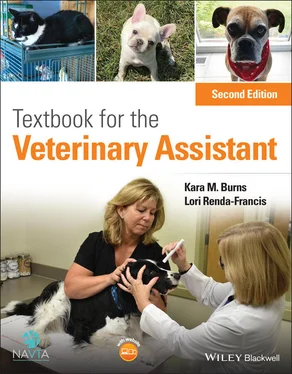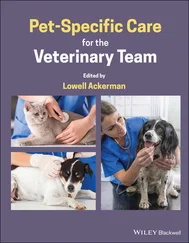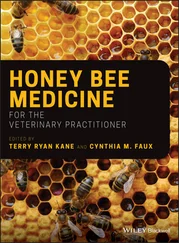| arthr‐ |
joint |
| balan‐ |
penis |
| bronch‐ |
bronchus |
| cardi‐ |
heart |
| cost‐ |
rib |
| cyst‐ |
bladder |
| enter‐ |
intestine |
| gastr‐ |
stomach |
| hepat‐ |
liver |
| hyster‐ |
uterus |
| laryng‐ |
larynx |
| metr‐ |
uterus |
| myo‐ |
muscle |
| nephr‐ |
kidney |
| neur‐ |
nerve, nervous system |
| oophor‐ |
ovary |
| orchi‐ |
testes |
| oss‐ |
bone |
| ovari‐ |
ovary |
| phleb‐ |
veins |
| phren‐ |
diaphragm |
| pneum‐ |
lungs |
| proct‐ |
rectum or anus |
| pulm‐ |
lungs |
| ren‐ |
kidney |
| splen‐ |
spleen |
| stern‐ |
sternum |
| thym‐ |
thymus gland |
| thyr‐ |
thyroid gland |
| trache‐ |
trachea |
| urethr‐ |
urethra |
| vas‐ |
vessel or duct |
| ven‐ |
veins |
Common abbreviations used in veterinary medicine
Below is a list of abbreviations and acronyms commonly used in veterinary practice. Please note that this is not a complete list of all veterinary abbreviations. It is a list of the most common abbreviations that are of interest to the veterinary assistant. It is also important to mention that abbreviations and acronyms will vary among veterinary practices, and you should obtain a list of those commonly used at your workplace. You can also purchase a copy of the Standard Abbreviations for Veterinary Medical Records , 2nd edition, from the AAHA Press. It contains a complete list of standard abbreviations.
| AD |
auris dexter (right ear) |
| ad lib |
freely, as wanted |
| AG |
anal glands |
| AL |
auris sinistra (left ear) |
| ASAP |
as soon as possible |
| AU |
auris unitas (both ears) |
| BAR |
bright, alert, and responsive |
| BID |
twice daily |
| BM |
bowel movement |
| BUN |
blood urea nitrogen |
| BW |
body weight |
| C |
with |
| CAP |
capsule |
| CBC |
complete blood count |
| CNS |
central nervous system |
| CPR |
cardiopulmonary resuscitation |
| CRT |
capillary refill time |
| DOA |
dead on arrival |
| DSH |
domestic shorthair |
| DLH |
domestic longhair |
| Dx |
diagnosis |
| FeLV |
feline leukemia virus |
| FIP |
feline infectious peritonitis |
| FIV |
feline immunodeficiency virus |
| FS |
female spayed |
| HBC |
hit by car |
| HCT |
hematocrit |
| HW |
heartworm |
| HWP |
heartworm preventative |
| ICU |
intensive care unit |
| ID |
intradermal |
| IM |
intramuscular |
| IO |
intraosseous |
| IN |
intranasal |
| IP |
intraperitoneal |
| IV |
intravenous |
| K‐9 |
canine |
| LRS |
lactated Ringer’s solution |
| MN |
male neutered |
| NPO |
nil per os (nothing by mouth) |
| OD |
oculus dexter (right eye) |
| OE |
orchidectomy (neuter) |
| OFA |
Orthopedic Foundation for Animals |
| OHE |
ovariohysterectomy (spay) |
| OS |
oculus sinister (left eye) |
| OU |
oculus unitas (both eyes) |
| PCV |
packed cell volume |
| per os |
orally (by mouth) |
| PO |
per os |
| PRN |
as necessary |
| q |
every |
| q2h |
every 2 hours |
| q6h |
every 6 hours |
| qd |
every day |
| qh |
every hour |
| qns |
quantity not sufficient |
| QID |
four times a day |
| QOD |
every other day |
| RBC |
red blood cell |
| R/O |
rule out |
| SC |
subcutaneous |
| SQ |
subcutaneous |
| SR |
suture removal |
| SID |
once a day |
| SUSP |
suspension |
| Tab |
tablet |
| TID |
three times a day |
| TNT |
toenail trim |
| TPR |
temperature, pulse, respiration |
| TX |
treatment |
| UA |
urinalysis |
| UNG |
ointment |
| WBC |
white blood cell |
You may find some variations on specific abbreviations or terminology used. It is important to determine what specific abbreviations are used at your place of employment.
1 Birmingham, J. 1999. Medical Terminology: A Self‐Learning Text. Mosby, St Louis, MO.
2 Chchron, P. 1991. Student Guide to Veterinary Medical Terminology. American Veterinary Publications, Goleta, CA.
3 LaFleur Brooks, M. 1998. Exploring Medical Language, 4th edition. Mosby, St Louis, MO.
4 Leonard, P. 2007. Quick and Easy Medical Terminology, 5th edition. Saunders, St Louis, MO.
5 McBride, D.F. 2002. Learning Veterinary Terminology, 2nd edition. Mosby, St Louis, MO.
6 Romish, J.A. 2000. An Illustrated Guide to Veterinary Terminology. Delmar Thomson Learning, Albany, NY.
7 Standard Abbreviations for Veterinary Medical Records . 2000. AAHA Press, Lakewood, CO.

www.wiley.com/go/burns/textbookvetassistant2
Please go to the companion website for assignments and a PowerPoint relating to the material in this chapter.
It is very important for veterinary assistants to recognize and have a clear understanding of basic directional and anatomicalterms and to understand and speak the language of anatomy. Like other veterinary professionals, veterinary assistants are expected to be able to communicate intelligently and precisely. When the veterinary technician or veterinarian asks you, the veterinary assistant, to restrain the animal so the distal portion of the radius can be bandaged, you will need to be able to understand and respond appropriately.
Anatomical directional terms
Directional terms should always be utilized because they accurately and concisely describe body locations as well as relationships of one body structure to another. Terms such as “up” and “down” or “forward” and “backward” should not be used as these terms can cause confusion among veterinary professionals. Consistent use of proper anatomical and directional terms ensures the clear and accurate communication of the intended message.
Directional terms and directional planes are references used to describe the position and direction of various body structures. Directions will generally refer to a relative location and not an absolute point. We must first understand the various anatomical planes utilized in veterinary medicine. The four basic planes are dorsal, median, sagittal, and transverse.
Читать дальше













